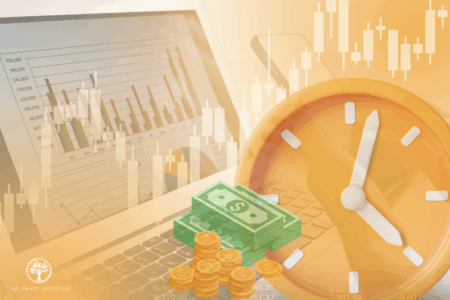DBS Group (SGX: D05) is the second Singapore bank to report its earnings after its peer United Overseas Bank (SGX: U11) announced a strong set of numbers last week.
Like UOB, Singapore’s largest bank did not disappoint.
DBS reported a record high net profit and return on equity (ROE) for its fiscal 2023’s first half (1H 2023).
Fee income for the second quarter of 2023 (2Q 2023) also grew year on year for the first time in six quarters.
Here are five highlights from the bank’s blockbuster set of earnings.
1. A stellar set of earnings
Looking at DBS’ 2Q 2023, net interest income (NII) for its commercial book division surged 54% year on year to S$3.6 billion.
The improvement was in line with higher interest rates which translated into a better net interest margin (NIM) for the bank.
Fee and commission income improved by 7% year on year to S$823 million.
Because of these increases, DBS’ total income increased by 35% year on year to surpass S$5 billion.
Expenses rose just 16% year on year, resulting in profit before allowances soaring 50% year on year to S$3.1 billion.
Net profit came in at S$2.6 billion for 2Q 2023, up 45% year on year.
The latest profit figures include S$60 million of integration costs related to DBS’ acquisition of Citigroup’s (NYSE: C) Taiwan consumer banking division.
For 1H 2023, the lender’s total income improved by 34% year on year to nearly S$10 billion.
Net profit clocked in at S$5.2 billion with ROE reaching 18.9%, both at record-high levels for the group.
2. Net interest margin continues to climb
DBS saw its NIM jump from 1.52% in 1H 2022 to 2.14% in 1H 2023.
On a quarter-on-quarter basis, NIM continues to trend up although the increase is moderating over the past three quarters.
2Q 2023’s NIM came in at 2.16%, up 0.58 percentage points from the prior year’s 1.58%.
It was also 0.04 percentage points higher than 1Q 2023’s NIM of 2.12%.
However, the quarter-on-quarter increase is less than that of 1Q 2023’s 0.07 percentage points and 4Q 2022’s 0.15 percentage points.
Despite this, CEO Piyush Gupta believes that there is an “upward bias” to NIM from current levels because of unexpected interest rate increases by the US Federal Reserve in the second half of 2023.
Around 20% of the bank’s commercial loans have also yet to be repriced to higher rates.
3. Better fee income and higher assets under management
Turning to fee income, DBS enjoyed a 3.5% year on year uplift for 1H 2023 to hit S$2 billion.
For the quarter, fee income hit S$999 million, 9% higher than the level a year ago.
The rise was attributable to three fee categories – wealth management, loans and credit cards.
Wealth management fees increased by 11.9% year on year because of higher insurance and investment product sales while loan-related fees jumped by 16.7% year on year to S$133 million.
Credit card fees improved by 16.7% year on year to S$237 million in line with higher travel spending.
DBS also saw assets under management (AUM) rise from S$294 billion a year ago to S$320 billion.
Fee income is projected to grow by mid-single-digits for 2023 as there is further upside from card spending along with better momentum in garnering AUM as S$12 billion of inflows was recorded by the bank in 1H 2023.
4. A dip in loan growth with an improving non-performing loans ratio
DBS’ loan book saw a 2% year-on-year dip to S$415.7 billion mainly due to a S$3 billion contraction in trade loans and a fall in wealth management loans during 1H 2023.
The subdued lending environment was due to the sharp rise in interest rates.
Still, management expects low-single-digit loan growth for 2023 contributed by non-trade corporate loans and trade loans in the second half.
The non-performing loans (NPL) ratio remained steady at 1.1% quarter-on-quarter but improved from the prior year’s 1.3%.
5. A sharply higher quarterly dividend
In tandem with the robust set of earnings, DBS hiked its quarterly dividend by 33% year on year from S$0.36 to S$0.48.
The increase brings its 1H 2023 dividend to S$0.90, 25% higher than the S$0.72 paid out in 1H 2022.
The bank’s annualised dividend based on S$0.48 per share has risen to S$1.92, giving its shares a forward dividend yield of 5.7%.
DBS reiterated its dividend guidance given at its May 2023 Investor Day, stating that a baseline increase of S$0.24 per year (i.e. S$0.06 per quarter) is sustainable barring unforeseen circumstances.
In addition, there could be a further ordinary dividend increase, a special dividend, or share buybacks depending on business conditions and the macroeconomic outlook.
By the time your child grows up, inflation will have gobbled up their savings. If you not only want to protect their money but also grow it, there are 3 SGX stocks you can consider buying. One has already proven to give a 55.8% dividend pay rise. Get all the details in our latest special FREE report. Just click here.
Follow us on Facebook and Telegram for the latest investing news and analyses!
Disclosure: Royston Yang owns shares of DBS Group.





